#tsar peter ii
Explore tagged Tumblr posts
Text

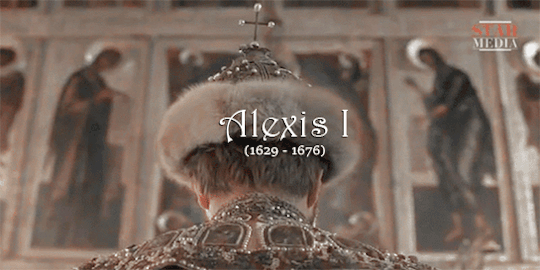


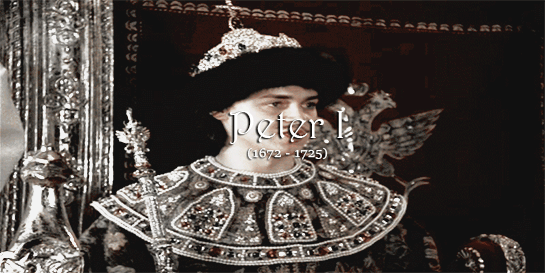






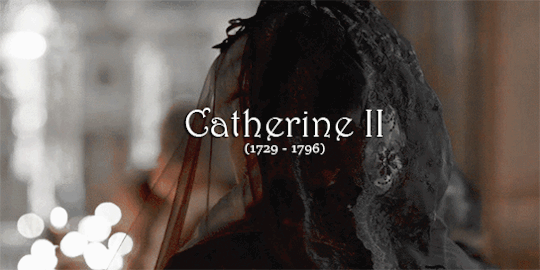
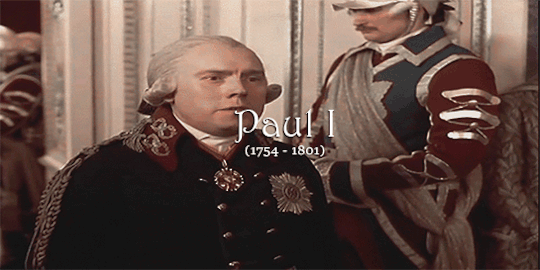




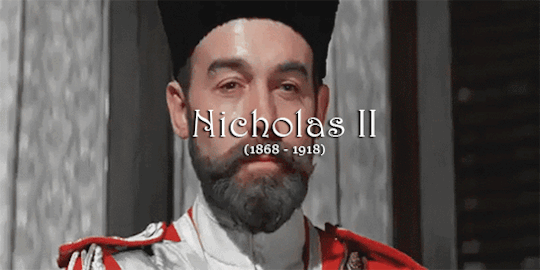
"Over the centuries, the Empire has grown in size and in the number of conquered peoples. It once possessed an area equivalent to one-sixth of the globe, stretching from the Pacific to the German border, on which the sun never set and which was ruled by an autocrat Tsar who owed satisfaction only to God."
The last tsars - a brief untold history about the Romanovs | Paulo Rezzutti.
(Loose translation)
#tsar#tsarina#facts#romanovs#russian history#the romanovs 2013#tsar michael i#tsar alexei i#tsar nicholas ii#catherine the great#tsar paul i#tsar peter ii#tsar peter iii#peter the great#tsarina elizabeth#tsarina catherine i#tsar alexander ii#tsar alexander iii#tsar alexander i#tsar nicholas i#tsar ivan v#tsar ivan vi#tsarina anna#tsarina anna i#tsarina elizabeth i#nicholas and alexandra 1971#zvezda imperii 2008#poor poor paul#roman imperatora 1994#delo dekabristov
236 notes
·
View notes
Text
petrushka<3
1 note
·
View note
Text

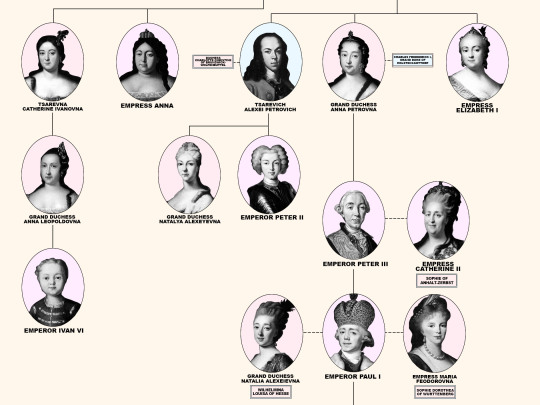
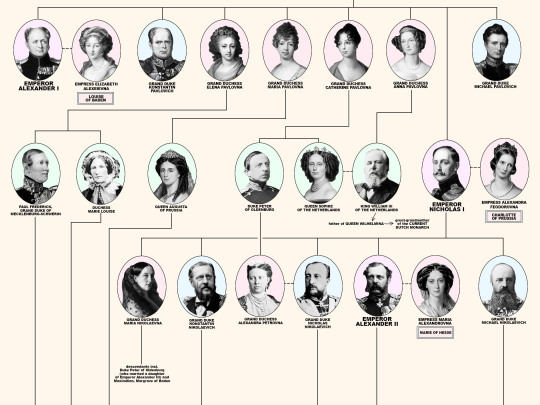
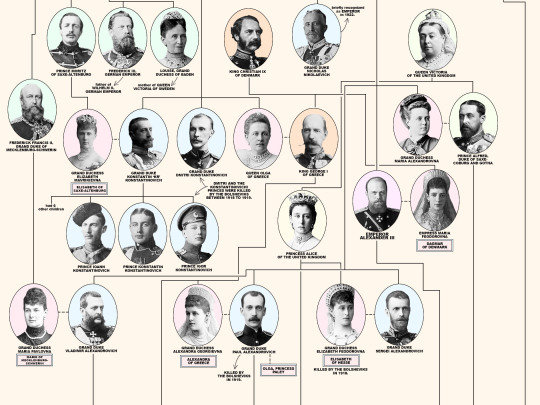
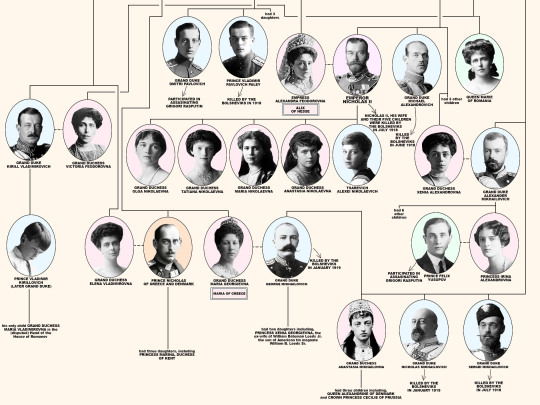
Members of the House of Romanov, the last reigning Dynasty of Russia.
From the first Romanov Russian Tsar Michael I (reigned 1613-1645) until the last Emperor Nicholas II (reigned 1894-1917). Including the 18 members of the house executed from 1918 until 1919; Grand Duke Michael Alexandrovich (13 June 1918). Nicholas II, Empress Alexandra Feodorovna, Grand Duchesses Olga Nikolaevna, Tatiana Nikolaevna, Maria Nikolaevna, Anastasia Nikolaevna, and Tsarevich Alexei Nikolaevich (17 July 1918). Grand Duchess Elizabeth Feodorovna, Grand Duke Sergei Mikhailovich, Prince Ioann Konstantinovich, Prince Konstantin Konstantinovich, Prince Igor Konstantinovich, and Prince Vladimir Paley (18 July 1918). Grand Duke Paul Alexandrovich, Grand Duke Dmitri Konstantinovich, Grand Duke Nicholas Mikhailovich, and Grand Duke George Mikhailovich (28 January 1919).
#romanovs#history#nicholas ii#alexandra feodorovna#olga nikolaevna#tatiana nikolaevna#maria nikolaevna#anastasia nikolaevna#alexei nikolaevich#myedits#peter i#peter ii#Peter iii#peter iii#Catherine the great#tsar alexei i#tsar michael#tsar paul i#alexander i#alexander ii#alexander iii#nicholas i#ancestry
404 notes
·
View notes
Text








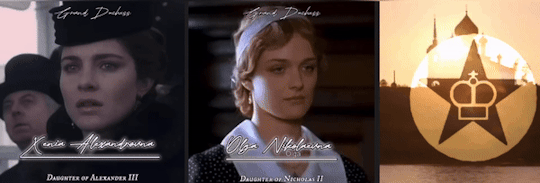
Eldest daughters of all Romanov Monarchs of Russia gifset
❦
#my first gifset!#it turned out okay but I will keep improving#Romanovs#Romanov#russian imperial family#Russian history#irina mikailovna#tsar mikhail I#evdokia alexeivna#tsar Alexei I#Catherine ivanovna#tsar Ivan v#Anna petrovna#Peter the great#Catherine I#Catherine the great#Alexandra pavlovna#tsar Paul I#maria alexandrovna#tsar Alexander i#Maria nikolaevna#tsar Nicholas I#Alexandra Alexandrovna#tsar Alexander III#xenia alexandrovna#tsar Alexander ii#olga nikolaevna#tsar nicholas ii#my edit#made by me
58 notes
·
View notes
Text
Fabergé Eggs

Fabergé Eggs, perhaps considered one of the most famous examples of exquisite and luxurious craftsmanship to this day.
Fabergé eggs were originally commissioned by the Russian Imperial family in the late 1800s AD.
Tsar Alexander III (10 March 1845 – 1 November 1894) wanted a richly jeweled egg as an Easter gift for his wife, so Russian jeweler Peter Carl Fabergé (30 May [O.S. 18 May] 1846 – 24 September 1920) got to work and produced very first Fabergé egg in 1885 AD.
And like Easter eggs you may find hidden in your shrubs or gutters, these eggs were also intended to contain a surprise inside.
Initially, the first Fabergé egg was to contain a diamond ring, but after specific instructions given by the Emperor, the egg could be opened to find a ruby pendant instead.
Over the course of the next two decades, ten eggs were produced for the family during Alexander III’s reign, starting a dazzling tradition that his son Nicholas II (18 May [O.S. 6 May] 1868 – 17 July 1918) would carry on for his wife and his mother every Easter.
The popularity of eggs-travagant gifts spread well beyond the Imperial family, and soon, other wealthy families began commissioning their own eggs.
The eggs then began to represent great wealth and luxury that owning a Fabergé egg was considered a status symbol.
And with the skill level and time that it took to craft up just one Fabergé egg – up to one year per egg – it’s no surprise they come with such a high value.
The intricate Fabergé egg-making process began by creating a design for the egg and then the outer shell would start to come to life.
The team of goldsmiths would craft the eggs out of precious metals like gold or silver.
They were each decorated with intricate engravings, filigree work and other decorative elements.
And while his competitors used a standard palette, Fabergé wanted to experiment with more colors.
He created resplendent yellows, mauves, and all shades of greens — coming up with over one hundred and forty new colors.
Just as important as its exterior, the Fabergé egg’s interior was given just as much attention to detail.
A team of jewelers would work on creating a surprise to be hidden inside the bejeweled shell.
These surprises could be anything from miniature portraits of the recipients’ husbands to tiny replicas of famous landmarks.
The artists behind these miniature works of art were some of the best miniature painters, sculptors and engravers of that time who used a variety of material, including enamel, precious stones and even hair to create their work.
Finally, once all of the intricate pieces were complete, they were assembled by a team of skilled craftsmen to create the final product.
The egg was then presented to the recipient and would become a treasured family heirloom for years to come.
Unfortunately, the House of Fabergé was forced to close its doors during the Russian Revolution in 1917.
Fabergé and his family fled Russia.
Many of the Fabergé eggs were sold, lost or smuggled out of Russia during this time, but now, many of them are housed in museums like the famous Fabergé Museum in St. Petersburg, Russia.
However, history came full circle when in 2007, with new ownership and direction, the company announced the reunification of the brand with the Fabergé family.
This new chapter set the stage for a total revitalization of the Fabergé name and philosophy, which are in tune with its original values and spirit.
#House of Fabergé#Fabergé Eggs#Russian Imperial Family#Tsar Alexander III#Peter Carl Fabergé#Easter eggs#Tsar Nicholas II#Russian Revolution (1917)#Fabergé Museum#St. Petersburg#Russia#craftsmanship#family health#status symbol#jewelries#House of Romanov#Easter#Happy Easter#Easter Sunday#Resurrection Sunday#eggs
50 notes
·
View notes
Text
youtube
#michael jayston#HappyHeavenlyBirthday#HappyBirthdayMichaelJayston#MichaelJayston#JaneEyre1973#jane eyre 1973#doctorwho#greatEnglishactor#greatBritishactor#RoyalShakespeareCompany#theValeyard#the valeyard#jayston#Valeyard#tsar nicholas ii#Nicholas and Alexandra#mr rochester#jane eyre#edward rochester#peter guillam#tinker tailor soldier spy#john le carre#great voice#Shakespeare actor#Beethoven#siegfried sassoon#charles dickens#lincoln dowling#the power game#captain hardy
3 notes
·
View notes
Text


Peter the Great and Tsar Nicholas II
There were two opposing models of autocracy in Russia: the Petrine and the Muscovite. Emulating Western absolutism, the Petrine model sought to systematize the power of the crown through legal norms and bureaucratic institutions. This was deemed a limitation on the Tsar's powers in that even he would henceforth be obliged to obey his own laws. The Tsar who did not was a despot. The Petrine tradition also implied a shift in the focus of power from the divine person of the Tsar to the abstract concept of the autocratic state. ... Nicholas[II]'s model of the autocracy was almost entirely Muscovite.
A People's Tragedy: The Russian Revolution, 1891–1924 by Orlando Figes
#Peter the Great#Tsar Nicholas II#Russian history#Tsarist history#history#The Petrine state#autocracy
3 notes
·
View notes
Text
#polls#poll#russia#russian empire#russian federation#romanovs#rasputin#catherine the great#peter the great#tsars#tsar nicholas ii#boris yeltsin#vladimir vladimirovich putin#dmitry medvedev#Российская империя#Российская Федерация
2 notes
·
View notes
Text
For 700 years, Moscow has expanded through relentless land grabs, growing into the largest country on Earth while subjugating countless nations.
In a recent video address, President Zelenskyy appeared wearing a T-shirt emblazoned with the slogan “Make Russia Small Again.” But this isn’t just a catchy phrase—it’s a call for historical justice and a reminder of Russia’s centuries-old imperial ambitions.

The T-shirt displays a map of the Grand Duchy of Moscow as it was in 1462, under the rule of Prince Ivan III, who sought to break free from the Golden Horde’s dominance. This era marked the beginning of Muscovy’s expansionist campaigns, during which it claimed lands beyond its borders. In the following years, neighboring principalities such as Yaroslavl, Tver, Ryazan, and Rostov were conquered—the same region that made headlines in August 2024 when Ukrainian forces advanced into it.
Even back then, Moscow employed methods that would become its standard practice for centuries—deportation. After conquering the Novgorod Republic, Moscow forcibly relocated its population to other regions. This move was designed to crush any resistance, as Novgorod had long been independent and a powerful rival to Moscow. By dismantling its center of influence, Moscow eliminated any hope for independence and silenced the potential for protest.
It was Ivan III who first declared himself “Tsar of All Rus,” even though he had never ruled over the lands of Kyivan Rus and merely aspired to conquer them. Over time, his ambitions extended to the northern territories of modern Ukraine—Siveria and Chernihiv regions.
The territory of Tatarstan, where the BRICS summit took place in Kazan in 2024, was conquered in the mid-16th century. These lands have never historically belonged to Russia.
In the following centuries, Moscow simultaneously pushed in all directions—deep into Siberia, south to the Caucasus, even waging war with modern-day Iran, while also advancing westward. The empire continuously grew, fueled by a desire to extend its global influence. When Peter I proclaimed the Russian Empire in the early 18th century, he claimed to be “reclaiming lands,” but in reality, it was a relentless campaign of conquest. Like every other empire, Russia’s expansion was built on the systematic expansion of its territories and subjugation of the peoples within them.
A particularly revealing example is Alaska. Russia sold the territory because it lacked the resources to maintain control, while the U.S. initially hesitated over whether it was worth purchasing.
Even in the 20th century, after the collapse of the Russian Empire and the rise of the Soviet Union, Russia continued its territorial conquests. In 1939, the Molotov-Ribbentrop Pact—a secret agreement between Nazi Germany and the Soviet Union—was signed. This pact divided Poland and carved out spheres of influence in Eastern Europe, effectively igniting the start of World War II.
While global empires were letting go of their colonies and former vassals were gaining independence, the Kremlin remained focused on expanding its influence. Moscow backed the war in Korea, as well as numerous other military conflicts, particularly in Asia. Its socialist-communist reach extended well beyond Asia.
Russia is a vast prison of nations. Over centuries, it has conquered vast territories, and in doing so, has not only seized land but also sought to erase the identities of the peoples it subjugated—just as it did in Novgorod. Native inhabitants were deported and resettled elsewhere. Crimean Tatars were forcibly expelled from Crimea, while people from central Russia were relocated to Ukraine’s Donbas.
The “Make Russia Small Again” T-shirt symbolizes a call for historical justice: Moscow was a principality in 1462. The history of the territories beyond serves as a reminder that Russia’s big size is the result of imperial conquest, with many nations still trapped in a sprawling colony.
73 notes
·
View notes
Text
Sadly, a majority of Americans are almost completely ignorant about Eastern Europe. They probably don't know the difference between Budapest and Bucharest. (Spoiler: They are capitals of two non-Slavic countries in the region)
When Russia illegally annexed Crimea in 2014, Americans were surveyed on the location of Ukraine on an unlabeled map. Just 16% got it right. This map shows one dot for each response.

Yes, a couple of people thought Ukraine was in Memphis. Not sure what's up with those many folks who thought it is in Greenland. Maybe that's why Trump tried to buy it from Denmark.
In history in US classrooms almost nothing is mentioned about Eastern Europe that happened before the 20th century. This short list of items is typical.
A few (usually exotic) personalities like Ivan the Terrible, Vlad the Impaler, and Peter the Great.
Copernicus (real name: Mikołaj Kopernik) sorting out the Solar System. And that is actually more science than history.
The Siege of Vienna (1683). Vienna is not exactly in Eastern Europe but the siege was lifted by Polish King Jan III Sobieski.
A passing reference to Tsar Aleksandr II freeing the serfs – but only because it happened within two years of the Emancipation Proclamation.
So if you know almost nothing about the location and history of a country, you certainly won't understand its importance to international peace and security.
And that's the case with Ukraine which Putin sees simply as a piece in his country collection in his effort to restore the decrepit Soviet Union in all but name.
As Brendan Simms writes in his linked article up top...
It is worth reminding ourselves what is at stake. If Putin is not defeated and forced to withdraw from Ukraine, this will endanger much more than just the viability of that country. It will enable the Russians to reconstitute their forces facing the Baltic states and Finland, constituting a threat that we will have to face without support from Kyiv. The Ukrainians are thus fighting not only for their own sovereignty but our security as well. Their army is one of the best guarantors we have against future Russian aggression. All they ask is our help. We should give them what they need.
About those so called "red lines" we hear about from tankies and Trumpsters – those lines apparently don't really exist.
Robyn Dixon and Catherine Belton at the Washington Post write:
Ukraine’s resistance to Russia’s invasion keeps crossing President Vladimir Putin’s red lines. Kyiv’s lightning incursion into Kursk in western Russia this month slashed through the reddest line of all — a direct ground assault on Russia — yet Putin’s response has so far been strikingly passive and muted, in sharp contrast to his rhetoric earlier in the war. On day one of the invasion in February 2022, Putin warned that any country that stood in Russia’s way would face consequences “such as you have never seen in your entire history,” a threat that seemed directed at countries that might arm Ukraine. If Russia’s territorial integrity were threatened, “we will certainly use all the means at our disposal to protect Russia and our people. It’s not a bluff,” he said a few months later in September. “The citizens of Russia can be sure that the territorial integrity of our Motherland, our independence and freedom will be ensured — I emphasize this again — with all the means at our disposal,” making a clear reference to Russia’s nuclear weapons.
In other words, Putin has been bullshitting.
Ukraine’s Kursk incursion “proved the Russians are bluffing,” said Oleksandr Danylyuk, a former Ukrainian intelligence and defense official, now an associate fellow with the Royal United Services Institute, a think tank in London. “It shuts down all of the voices of the pseudo experts … the anti-escalation guys.”
Vladimir Putin can bluff only so much before people see that he's full of shit.💩 We're already past that point. His imperialist fantasies make him think that he's back in the Soviet Union and all he has to do is say something bellicose to get whatever he wants.
There are now Ukrainian troops on Russia's soil and over 133,000 refugees fanning out from the area telling other Russians of what's really going on near the border without censorship from Russian state media. The weaker Putin looks inside Russia, the sooner his invasion will end.
As I've said before, give Ukraine whatever weapons it wants – except nukes. Ukraine is doing NATO an enormous favor by keeping Putin at bay.
#invasion of ukraine#eastern europe#ukraine#kursk#former soviet union#vladimir putin#russian imperialism#russia's war of aggression#red lines#bullshit#oleksandr danylyuk#россия#курская область#агрессивная война россии#бывший ссср#владимир путин#путин хуйло#долой путина#россия проигрывает войну#путин – это лжедмитрий iv а не пётр великий#руки прочь от украины!#геть з україни#в��оргнення оркостану в україну#деокупація#курськ#олександр данилюк#слава україні!#героям слава!
36 notes
·
View notes
Text
I've been wanting to write a longer thread about this for awhile.
If you're new to the concept of Anarchy, even if you know the basics, you most likely have never heard of Anarcho-Nihilism. If you know basic leftist Ideologies, or just scrolled Political Compass pages, you know of Anarcho Communism, and most people understand there's other branches for marginalized groups like Queer Anarchy, Anarcha Feminism, etc.
This thread will go over Anarcho-Nihilism and the basics of what it is. It will talk to the reader as if you already understand the basic concepts of Anarchy, so if you don't, I recommend reading "Life Without Law" before coming back here.
Anarcho-Nihilism: A Beginners Text To How Fucked We Are

Anarcho-Nihilism is a post-left ideology, meaning that most of the substance of its standpoint are direct criticisms of not just Anarchy, but the leftist movement as a whole, which means Anarcho-Nihilists often reject the label of "Leftist" all-together.
Anarcho-Nihilism is also directly connected to Individualism and Egoism, with more modern Anarcho-Nihilists aligning into Eco-Extremism as well.
Post-Left criticisms, which includes Anarcho-Nihilist criticisms, of the Left include but are not limited to the Lefts view on Organization, Revolution, Unity of Ideologies, Fetishism of Work and Industry, and need of Popularity Politics. We will get into these shortly.
Brief History and Moments of Inspiration
Anarcho-Nihilism takes inspiration from a wide range of people and movements in history, but the earliest "creation" of Anarcho-Nihilism starts with the "Nihilist Movement", which was a Russian movement in the 1860s which focused on attacking traditional ideas of society such as morality, authority, traditionalism, and religion. This came from the growing divide between older radicals and the younger generation who were disillusioned towards older forms of leftist organization and ideas.
Russian anarchist Peter Kropotkin discussed the movement itself, stating "defined nihilism as the symbol of struggle against all forms tyranny, hypocrisy, and artificiality and for individual freedom".
Early forms of Russian Nihilist theory incorporated Egoist theory into its ideas, and saw that all morality, aesthetics, and social institutions were meaningless, but they did not see all ethics, knowledge, and human life as meaningless.
Russian Nihilism was characterized throughout Europe for being linked to Political Terrorism due to multiple assassinations and assassination attempts against politic officials, including the assassination of Tsar Alexander II in 1881. Historian M. A. Gillespie concludes that Russian Nihilism was at the core of revolutionary thought in Russia throughout the lead up to the Russian Revolution.
Anarcho-Nihilism as a movement grew with voices like Kaneko Fumiko, a self identified Anarchist and Nihilist who was convicted of plotting to assassinate members of the Japanese Imperial Family.
Kaneko had many experiences from working with the notably Christian Salvation Army, to studying socialist movements and revolutionaries, anarchist theorists, and Nihilist movements. She only maintained a brief relationship with the Salvation Army, not compelled by their beliefs as well as being abandoned by a Christian friend after he felt his growing feelings towards her were threatening his beliefs. From the Salvation Army she jumped into the socialist movement, but was let down as she found Socialists would often behave in ways they directly advocated against.
Kaneko says her radical shift from Socialism to Anarchism and Nihilism came in 1922 when she met Hatsuyo Niiyama, who she considers her closet friend. Hatsuyo introduced her to thinkers like Max Stirner, Mikail Artsybashev, and Friedrich Nietzche. Kaneko also met Pak Yol, a Korean activist and anarchist who shared her belief systems.
Kaneko and Pak themselves helped continue to define a new set of Anarchism that aimed away from the common ideas of Syndicalism and Union Organizing, Kaneko herself writing about her views in a document made to the court in 1925 after she and Pak were convicted of attempted assassination, stating "formerly I said 'I negate life'... [but] my negation of all life was completely meaningless... The stronger the affirmation of life, the stronger the creation of life- negation together with rebellion. Therefore, I affirm life...Living is not synonymous with merely having movement. It is moving in accordance with one's will… one could say that with deeds, one begins to really live. Accordingly, when one moves by means of one's own will and this leads to the destruction of one's body, this is not a negation of life. It is an affirmation." Kaneko also claimed she wanted to "throw a bomb at the Emperor to show he, like everyone, will someday die" to deny his authority as all powerful.
One of Kaneko's main criticism of the Socialist Movement was the treatment of women, including her, in the movement itself, and this further pushed her into Anarchism and Nihilism as she believed that even these Socialist men would abuse their authority should it be granted.
Blessed is the Flame: The Anarcho-Nihilist Manifesto
"The anarcho-nihilist position is essentially that we are fucked. That the current manifestation of human society (civilization, leviathan, industrial society, global capitalism, whatever) is beyond salvation, and so our response to it should be one of unmitigated hostility. There are no demands to be made, no utopic visions to be upheld, no political programs to be followed — the path of resistance is one of pure negation." Serafinski "Blessed is the Flame"(2015)
Blessed is the Flame is considered one of if not the theory for Anarcho-Nihilism of the modern age, with its criticisms of organization and resistance during times of great tragedy.
Blessed is the Flame is a piece of text about not just Anarcho-Nihilism, but Negation through the lens of the Holocaust and Concentration Camp Resistance. The theory takes the time to explain to the reader just how bleak the reality of life was for concentration camp prisoners, and how the Nazis did everything in their power to snuff out rebellion at its core, and how people rebelled anyway, even when there was no hope to rebellion. Because of this perspective, and usage of a great tragedy, many have criticized Blessed is the Flame for romanticizing the struggles of camp prisoners, even if the author meant not to.
Blessed is the Flame, nonetheless, does the important task of putting what Anarcho-Nihilism is into digestible theory that can be spread and built upon.
Blessed is the Flame asserts that, as the quote says above, Anarcho-Nihilism is the belief that the world as we know it is fucked, to put it simply. That the current systems of domination such as white supremacy, patriarchy, colonialism, etc. have their roots too deep to be organized away, that we have reached past the point of no return for ecological destruction (Global Warming), and that we should meet this hopelessness with destruction.
Blessed is the Flame, and Anarcho-Nihilism, directly criticizes the Marxist idea of Progress. Progress, as in, the idea that Humanity overtime progresses in its worldviews and we will naturally get to a point where Humanity achieves some better world without hate or exploitation, away from the systems of domination. It is argued that history shows we do not progress up, even if we have moments things seem better, we keep crashing harder and harder as the systems of domination grow stronger and root themselves deeper into our lives and psyche. "The conception of history that came out of the Marxist tradition (dialectical materialism) dictated that the transformation of society would pass through capitalism... to transform into socialism and eventually communism. This meant that progressivism was embedded within this (the dominant) branch of socialism."
Blessed is the Flame also argues that, "This stands in direct contrast to other anarchist tendencies that place at least some emphasis on “positive programs” — aspirations to construct something ideal in the present world or to craft plans in preparation for the downfall of the current system. Anarcho-nihilism understands the positive program as “one that confuses desire with reality and extends that confusion into the future” by either making promises about what a revolutionary future might hold, or attempting to bring those conditions about from within the existing order."
To put it more plainly, Anarcho-Nihilists argue that whatever we try to build under these current systems will be co-opted, capitalized, and/or destroyed as they will be at odds with these systems. That our socialist programs, minority solidarity movements, etc. will always find their ways back to being assimilated into the death machine that is industrial civilization.
Imprisoned members of the CCF (Greek Conspiracy Cells of Fire) write, "We anarcho-nihilists ...don’t talk about ‘transformation of social relations’ towards a more liberated view, we promulgate their total destruction and absolute annihilation. Only through total destruction of the current world of power... will it be possible to build something new. The deeper we destroy, the more freely will we be able to build".
The argument is that if we meet the state with negation, with destruction, then our positive movements cannot be co-opted and destroyed. The further we dismantle the states control, the more freely we can take the time to build ways we can help each other.
In this same frame of argument, Anarcho-Nihilists, including the aforementioned imprisoned members of the CCF, argue that creating strict organization is "construction of a dam that tries to control the impetus of the abundant stream of Anarchy". Anarchy is fluid and will take many paths, and attempting to redirect Anarchy onto one path is undesirable.
Coming back to Post-Leftism, Anarcho-Nihilist (as well as Post-Leftism) critiques the lefts style of organization, the revolution, and a need for popularity politics. Blessed is the Flame brings up how the Nazis used this concept of "future time" to break the spirits of camp prisoners, through slogans such as "Freedom Through Work", being told they were being taken to Sweden only to end up in Auschwitz, taken to be Showered only to be stripped and put into prison clothes, told Work was Freedom only to be worked to death. The Nazis, cruelly, suspended the Prisoners in this Limbo of time between certain death and uncertain future, breaking their resolve to fight back as fighting back could cost them that possibility of freedom. The key to insurgency wasn't to open the curtain to reveal the lie of future time, as this lead to despondency and the further breaking of the soul. Blessed is the Flame argues that the key might lie between what is dubbed "Lager-Time" (future time) and Suicidal Despondency, something called "Suspension". In Suspension, there is no focus on the past nor future, but rather, the need to survive in the current moment. Breaking free of that suspension in the present, throwing away the chains of time, lead to violent uprisings and revolt even in the most hopeless of situations.
The paragraph above ties into Anarcho-Nihilisms critiques of the lefts view of the aforementioned 3, organization, revolution, and popularity politics. Anarcho-Nihilism argues that the left views organization as a non-violent house of cards that must be meticulously built up fully, no matter how many times it gets knocked down, and that our Revolution may only come after this house of cards is built. The left with also argue that this house of cards can only be built through their ideas becoming popularized, such as "workers of the world uniting", and once that happens then Revolution is an inevitable force. Leftists argue that revolution WILL happen, this precarious house of cards WILL be built, and there IS a better world and denying this is anti-revolutionary.
Anarcho-Nihilists reject this, viewing this as a form of Lager-Time, unable to act in the present because of uncertainty, or rather a false certainty, of the future. Given what was previously said about Anarcho-Nihilists view of Progress, they argue that radicals shouldn't wait for some Rapture like "revolution", that while we wait for workers to unite, fascism builds and global warming worsens and capitalism continues to evolve like an ever growing leviathan. The fact is, Anarcho-Nihilism claims, there isn't a reality where the workers of the world all wake up and unite against the common enemy. Even in socialist movements there lays bigotry against marginalized groups that chokes the life from these movements and further scatters the solidarity amongst each other.
Anarcho-Nihilists, as well as Blessed is the Flame, directly oppose the lefts modern form of organization, which is built on democratic circles and layers of policy and aesthetics. Needing to go through 3 different rings of people to do action just delays, and defangs, the action. Anarcho-Nihilism advocates for decentralized forms of organization, where the "org" is disconnected from each other except by name and motivation. If you want to do action, you just fucking do it, no bureaucracy bullshit. Examples of these modes of Organization is ELF (Earth Liberation Front), ALF (Animal Liberation Front), and the CCF (Conspiracy Cells of Fire). Each of these fronts is without leaders, without form, moving like water to serve the cause when needed. To be a part of groups like these, such as ELF and ALF, you need only to agree with the views, and that's it. You can create an ELF or ALF group right now with friends and go do shit.
At its core, the Anarcho-Nihilist critique is that of an Individualist one, of the collective vs. the individual. This critique argues that often, the will of the collective can overrule the freedom of the individual, stunting action and even self that the collective was supposed to foster (This specifically being a similar argument that Max Stirner, the "Father of Egoism", has discussed).
"...think back to 2012 when the CEO of an Italian nuclear power company was shot in the kneecap by two anarcho-nihilists who claimed the attack under the banner of the FAI. After the attack (which was partly inspired by the 2011 nuclear disaster in Fukushima), the pair released a communique pointing to the various atrocities committed in the name of nuclear power and calling for an all-out attack on the nuclear industry. In response to that action, the Anarchist Federation in Italy (a formal Marxist organization with no relationship to the FAI) issued a response that condemned such a renegade action: “... we strongly criticize individualist and vanguardist tactics that do not come out of a broad-based class-struggle movement. We condemn actions that put workers in danger without their knowledge...” According to this perspective, the individual acting without the validation of a formal collective, and without respect for working class solidarity, has no place in an anarchist movement. In counter-response to this (and other condemnations), insurrectionary and nihilist keyboards ignited with scathing indictments of this breed of “civil anarchism” that tries to restrain individual attacks behind the “working class” banner." Blessed is the Flame.
So, if we are fucked, and Leftist modes of organization can strangle action, what is there to do? Why fight back?
Hope Is Not A Plan: Jouissance and Insurgency

Jouissance is a French word for "enjoyment" but can have connotations related to "uncivilized desire".
"Jouissance is an ecstatic energy, felt but never captured, that pushes us away from any form of domination, representation, or restraint, and compels us towards fierce wildness and unmitigated recalcitrance. It is “the process that momentarily sets us free from our fear of death” and which manifests as a “blissful enjoyment of the present,” or a “joy which we cannot name.”[110] Jouissance is the richness of life evoked by resistance, the spirit that allowed Mária Jakobovics to continue her acts of sabotage despite the sting of the club or the threat of the noose, and the spirit that perhaps allows many of us to lead lives of resistance in absolutely overwhelming circumstances. It is the visceral experience of negation as ecstatic liberation." Blessed is the Flame
Jouissance, for Nihilists, is the core of Anarchism. The need, no, the Joy of resistance to keep us alive and going. Not fighting because we might win, not fighting because we might lose, but fighting because we can and we fucking will. "Inmates who physically confronted their oppressors were not engaged in a “rational political struggle for a better future,” but rather understood the futility of their situations and chose to fight back regardless."
Said from the CCF, "what really counts is the strength we feel every time we don’t bow our heads, every time we destroy the false idols of civilization, every time our eyes meet those of our comrades along illegal paths, every time that our hands set fire to the symbols of Power. In those moments we don’t ask ourselves: ‘Will we win? Will we lose?’ In those moments we just fight." Anarcho-Nihilists favor Insurgency and Insurrection, not Revolution. Anarcho-Nihilists are for short bursts of violent energy, of humans taking up arms not for some convoluted idea of politics, but for the goal of rebelling. Like the burning of the Minneapolis Precinct in 2020, letting the rage and rebellion of those of us still living shining through and proving we still have fight in us, we won't die quietly in the night. These short bursts of violent energy encouraging humans to negate the will of the systems of domination, and encouraging more radical action and eventual destruction of these systems entirely, because what else is there? We live under these impossible systems, we fight and possibly die or we don't fight and we DO die.
"The active nihilist sees in the unknown future and despair at our current situation, a call to arms. Meaning is found in approaching the void rather than in the false knowledge of what is on the other side of it." —Attentat
Embracing the Void: How We Can Use This
On a real level, I don't expect you to read this and instantly agree we are fucked. Embracing this idea that our world is gone is a difficult one, and a depressing one.
Instead we can focus on what Anarcho-Nihilism brings to the table regarding its critiques and ideas.
We can begin to embrace decentralized modes of organizing, instead of searching for some Vanguard party to get swallowed up into. When you have an idea, do it. Get with friends or peers and go out into the world.
We can embrace negating the system when at all possible, illegalism as a tactic.
We can embrace the uncertainty of the future and, instead of waiting for things to get better, we can take action NOW, in the present, outside of suspension to do what we can because we can. Our nihilism does not have to paralyze us, it can instead energize us.
Anarcho-Nihilism Reading List
Blessed is the Flame
Blessed is the Flame (Audiobook)
Desert
Desert (Audiobook)
The Insurrectional Project
The Economy is Suffering, Let it Die!
Uncivilized
Say You want an Insurrection
Anarchy: Civil or Subversive?
Armed Joy
Notes on Post-Left Anarchism
Accomplices not Allies: Abolishing the Ally Industrial Complex
Rethinking the Apocalypse: An Indigenous Anti-Futurist Manifesto
Voting is Not Harm Reduction - An Indigenous Perspective
#leftist#leftism#anarchy#anarchism#anarchist#socialism#socialist#communist#communism#theory#long thread#long post#nihilism#history#anarcho nihilism#anarchocommunism#anarcho syndicalism#anarchofeminism#anarchopunk#punk
33 notes
·
View notes
Text

Tsar Nicholas II, Tsarina Maria Feodorovna, Princess Irina Alexandrovna, Grand Duchess Xenia Alexandrovna and Duke Peter of Oldenburg having a tea.
#tsar nicholas ii#xenia alexandrovna#princess irina#maria feodorovna#peter of oldenburg#irina alexandrovna#tsar#tsarina#grand duchess#princess#duke#my own
27 notes
·
View notes
Text
Romanovs men edit💋
my edit made by using capcut!!
i'm in love help mee😩😜
They are all so handsome, gentle and clever
#my edit#capcut edit#capcut#my first love#romanovs men#george alexandrovich#nicholas i of Russia#alexander iii#Sasha#peter the great#tsar nicholas ii#alexei nikolaevich#grand duke mikhail pavlovich#grand duke mikhail alexandrovich#alexander ii
47 notes
·
View notes
Text

The Princess of Orange Receiving Alexander II (1818-1881), Grand Duke and Heir to the Throne of Russia, in the Czar Peter's House in Zaandam, 17 April 1839
Artist: Christiaan Julius Lodewijk Portman (1839-1840)
Date: 1839-1840
Medium: Oil on canvas
Collection: Rijksmuseum, Amsterdam, Netherlands
Description
The Princess of Orange receives Alexander II, Grand Duke and heir to the throne of Russia, in the Tsar Peter House in Zaandam, 17 April 1839. The princess presents the Grand Duke with a tray containing bread (in the shape of a turban) and salt in a salt cellar, a well-known Russian welcoming ritual. Present are (from left to right): Prince Willem Alexander Frederik (Alexander) of Orange-Nassau, Prince Willem Frederik Hendrik (Hendrik) of Orange-Nassau, Elisa Martha, Countess of Limburg Stirum, Sophia Wilhelmina Petronella, Countess of Wassenaar, Prince Willem (III) of Orange-Nassau, Dieuwke Fontein, her husband Adriaan van der Hoop, Prince Willem Frederik Karel (Frederik) of the Netherlands, Princess Anna Pauwlona of Russia, Princess Louisa of Prussia, Prince Willem II of Orange-Nassau, Alexander II of Russia, his aide-de-camp Count Orloff and between the figures at the door Baron d'Ivoy and Baron Mackay.
#group portrait#princess of orange#netherlands#painting#oil on canvas#netherlandish history#interior#tray#bread#salt ellar#russian welcoming ritual#royalty#christiaan julius lodewijk portman#netherlandish painter#netherlandish culture#19th century painting#narrative art#artwork#fine art#european art#russian empire#men#women#costume
17 notes
·
View notes
Note
do you know where the first few of the romanovs resided before all of the palaces were built and if so, are any of them remaining? do we know what they look like?
I'm afraid very little from the earliest days of the Romanov dynasty had survived the ravages of time. By the time of Nicholas II, many early residences had already been either destroyed or replaced by the modern and elegant palaces we see today. Here's a few that survived.
The Cabin of Peter the Great May 1703
Built during the founding of the city of Saint Petersburg, the log cabin was the first St. Petersburg "palace" of Tsar Peter the Great. The small wooden house was constructed in just three days, by soldiers of the Semyonovskiy Regiment.
At that time, the new St. Petersburg was described as "a heap of villages linked together, like some plantation in the West Indies".
The Cabin was boarded up and camouflaged during the Second World War. It was the first St. Petersburg museum to reopen in September 1944, after the end of the Siege of Leningrad.



This cabin must have appeared as a huge downgrade after the wooden palace of Tsar Alexei!
The Wooden Palace of Tsar Alexei Romanov 1667
The recreation of an authentic mid-17th century Romanov residence was built recently in 2010. The Palace of Tsar Alexei Mikhailovich, also known as the Wooden Palace of Tsar Alexei, is a large wooden palace in Kolomenskoye, near Moscow, Russia.
The original was built in 1667 without using any fasten materials, nails or hooks. The wooden palace, famed for its fanciful, fairytale roofs, was a summer residence for Russian tsars before St. Petersburg was constructed.
The palace was divided into male and female halves, with the Tsar and Tsarevitches towers and chambers in the male half and the Tsarina's towers in the female half.
The palace's interior featured rich decorations, including carving, painting, gilding, and ceramic tiles, as well as rectangular and round stoves, weathercocks, and windows and porches.
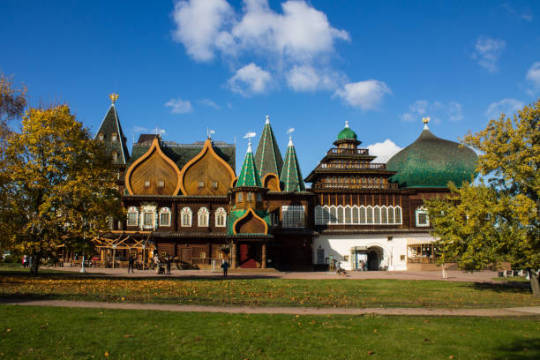


Foreigners referred to this huge maze of intricate corridors and 250 rooms, as 'an Eighth Wonder of the World'. Although basically only a summer palace, it was the favorite residence of Tsar Alexei I.
The future Empress Elizabeth Petrovna was born in the palace in 1709, and Tsar Peter the Great spent part of his youth here.
Upon the departure of the court for the swamps of St. Petersburg, the palace fell into disrepair, so that Catherine the Great refused to make it her Moscow residence. On her orders the wooden palace was demolished in 1768, but thankfully, the detailed plans of the palace had survived.
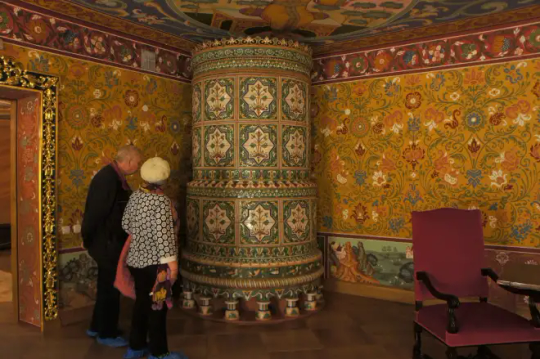
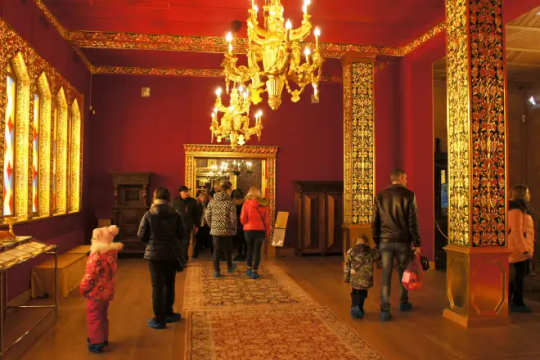

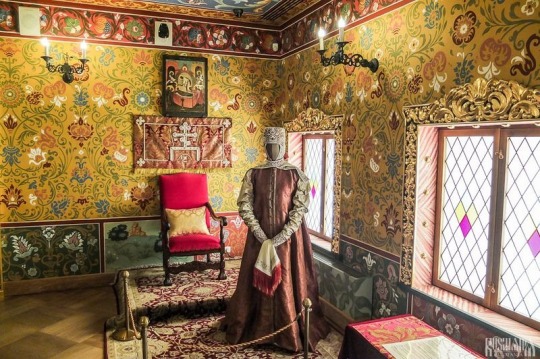
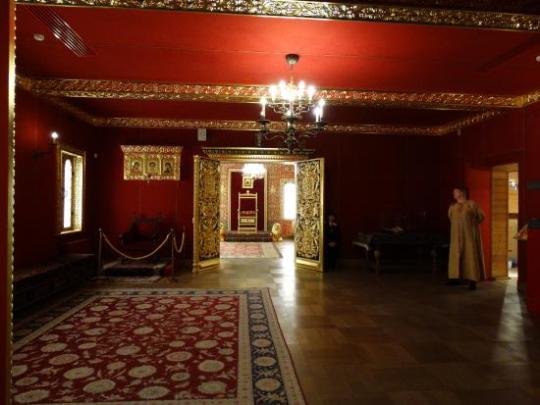
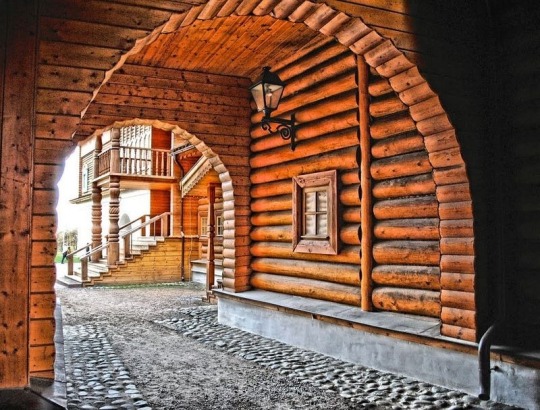
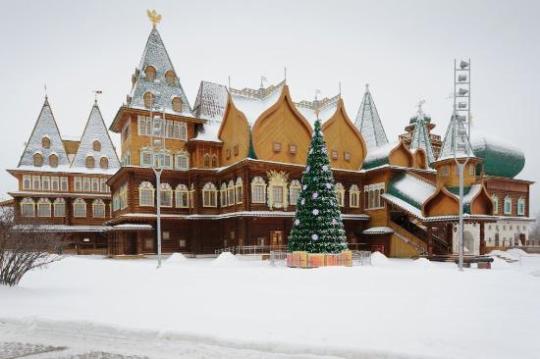
Summer Palace of Peter the Great
1714
One of the earliest imperial residences I can think of that still exists today is the modest Summer Palace of Peter the Great, which is located on an island near the Peter and Paul Fortress, the burial place of the Romanovs.
The palace was built between 1710 and 1714, a few years before the proclamation of the Russian Empire. By the time of Tsar Nicholas II's reign at the end of the 19th century, it became vacant.
During the Second World War, both the Summer Palace and Summer Gardens were badly damaged by a German bombing raid. The building was repaired, however, and the layout remains unchanged from the original.
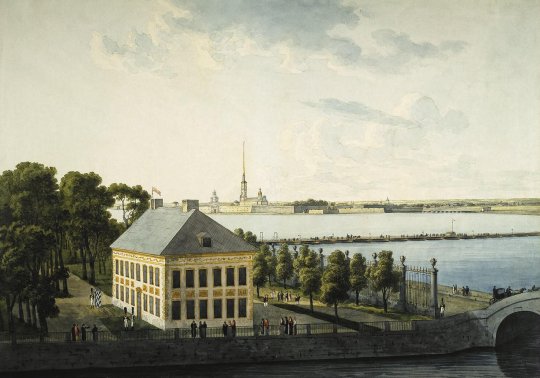
Above: The palace as depicted in 1809. Below: The residence today.
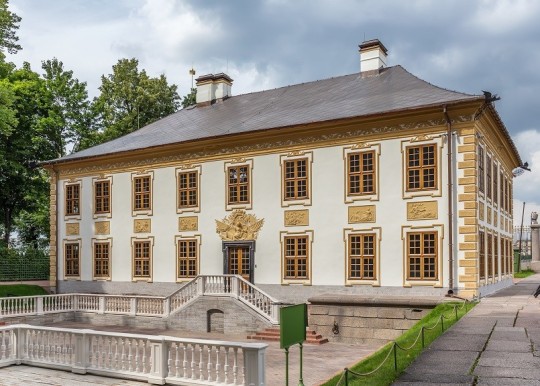

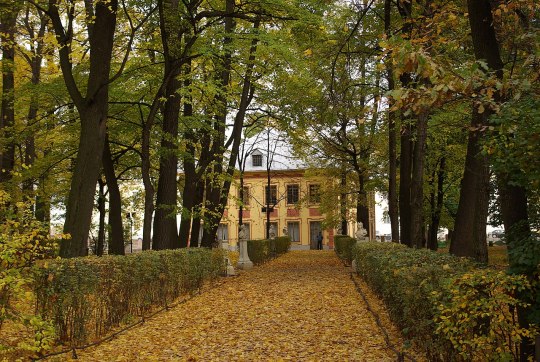
Monplaisir Palace in Peterhof 1714-1716
There is another residence owned by Peter the Great that is still standing today. And that is the Monplaisir Palace in Peterhof.
The following painting depicts the formidable Tsar and his son and heir Tsarevich Alexei Petrovich, who has been accused of preparing to seize power, in the interior of the Monplaisir Palace. Before pronouncing sentence, Peter I gazes into his son's eyes, still hoping to discern signs of remorse.

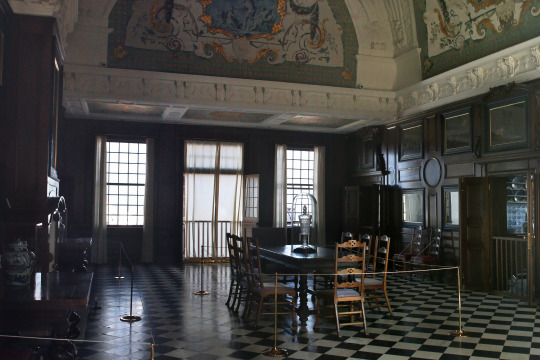
Above: The Parade Hall of Monplaisir Palace today.
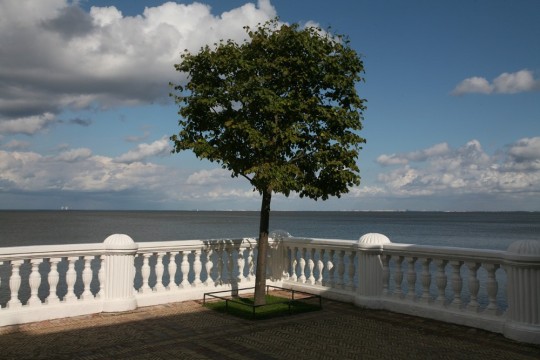
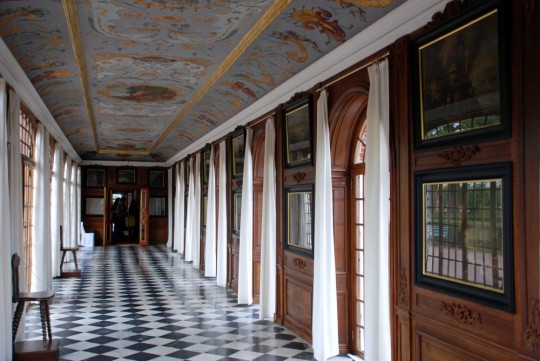

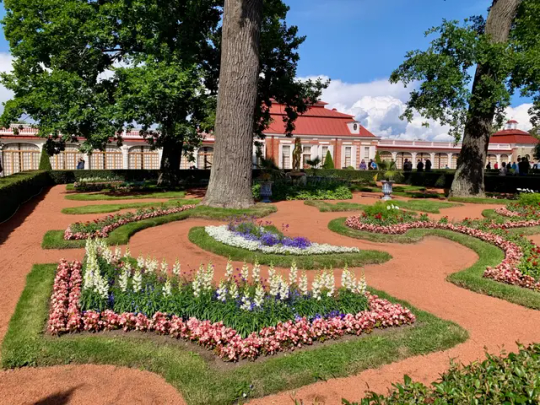
#romanov#romanovs#palace#palaces#history#russian culture#russian history#royal history#imperial russia#moscow#saint petersburg#peterhof#russian imperial family#ask
41 notes
·
View notes
Text










Women’s History Meme || Mistresses (6/10) ↬ Yekaterina Mikhailovna Dolgorukova (1847 – 1922)
By the next morning, of course, the court knew. The ladies-in waiting of the late empress were stunned and angered. The witnesses had to justify their behavior by explaining they were commanded to do so. The news traveled instantly from Tsarskoye Selo to St. Petersburg. Mme Bogdanovich recorded her “profound indignation” in her diary. The general reaction was “the old emperor has immediately forgotten his poor wife and married a young debauched woman.” The two-faced Janus didn’t get it, yet again. The despot Peter the Great could marry a cook and make her an empress— precisely because he was a despot. Alexander, who wanted to rule European-style, had to think about public perception all the time. But he had been brought up by his father, and he could not get used to the idea of public accountability. That night she slept in the palace, in his bed, and he sat at his desk and finalized formalities. He signed the necessary decree: “To the Government Senate: Having entered a second time into a legal marriage, with Princess Ekaterina Mikhailovna Dolgorukaya, we command her to be named Princess Yuryevskaya with the title Serene Princess. We command that the same name with the same tide be given to our children: our son, Georgii, our daughters Olga and Ekaterina, and also to any others that might be born subsequently, and we confer upon them all the rights of legitimate children in accordance with article 14 of the empire’s basic laws and article 147 of the Statutes on the Imperial Family. — Alexander II: The Last Great Tsar by Edvard Radzinsky While sex between even the lustiest pair usually fizzled after a few years, Czar Alexander II (1818–1881) and his pretty brunette mistress Katia Dolguruky enjoyed a passionate sex life throughout a fifteen-year relationship that ended only with his death. Though profoundly stupid, Katia was thirty years younger than Alexander and adored lovemaking. In 1870 the czar wrote her, “What I felt within me you saw for yourself, just as I saw what was happening to you. That was why we clenched each other like hungry cats both in the morning and in the afternoon, and it was sweet to the verge of madness, so that even now I want to squeal for joy and I am still saturated in all my being.” — Sex With Kings: 500 Years of Adultery, Power, Rivalry, and Revenge by Eleanor Herman
#women's history meme#catherine dolgorukova#house of romanov#russian history#european history#women's history#history#19th and early 20th#nanshe's graphics
26 notes
·
View notes